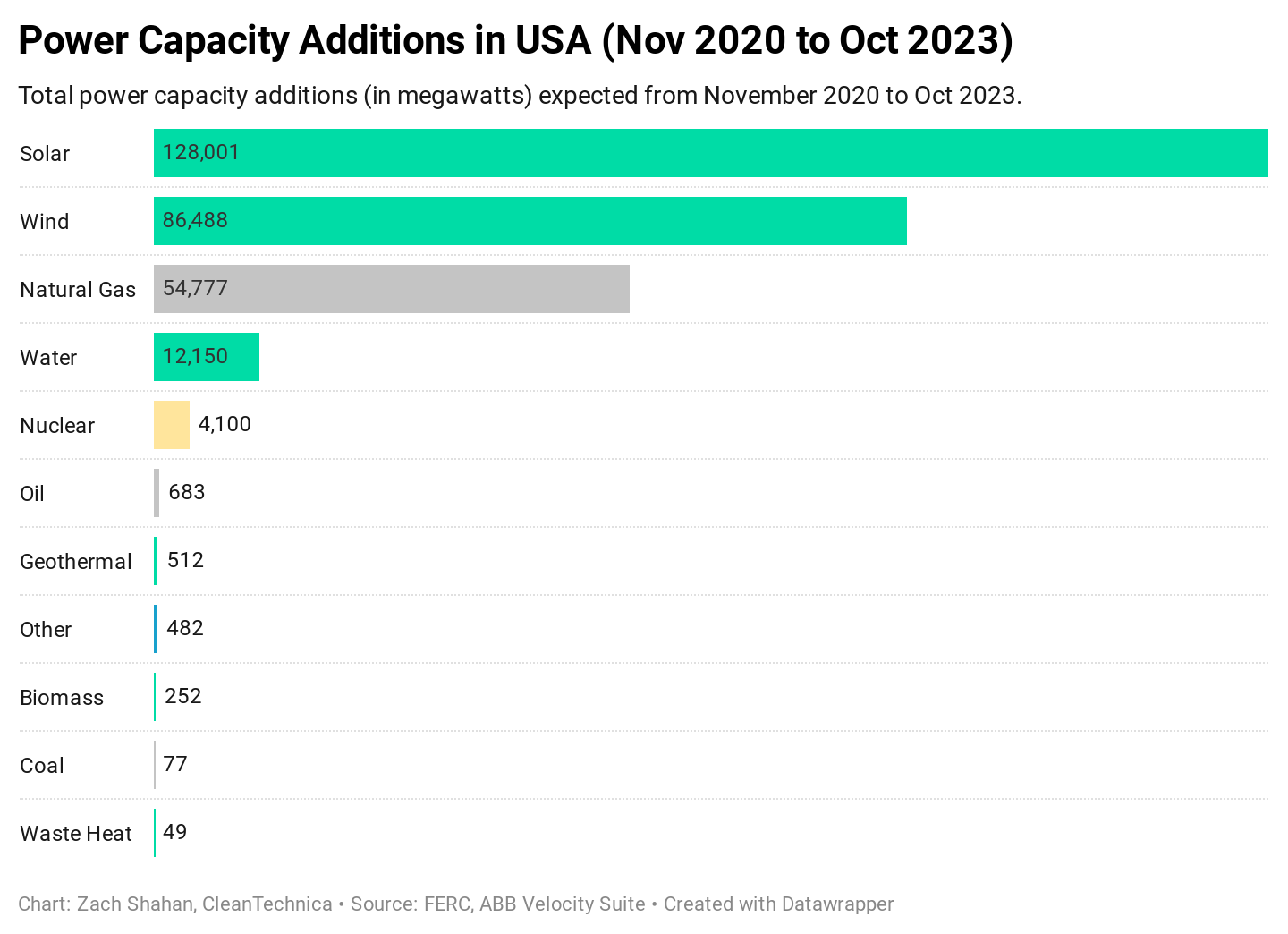December 21st, 2020 by Zachary Shahan
Last week, I published an update on US power capacity — new additions as well as total power capacity. The good news was that 100% of new capacity power in October was from renewable sources. The less good news was that only 21.7% of total power capacity is from wind, water, and solar power plants (only counting large-scale solar, not small-scale rooftop solar).
But there was one more thing at the end of the report that I found interesting and wanted to explore further. FERC also now includes a three-year forecast regarding new power capacity additions. Naturally, over three years, much can change, but here’s what FERC, via the ABB Velocity Suite, is expecting as far as new additions (broken out by “all additions” and “high-probability additions”) and retirements (power capacity closing down):
Here are some percentage breakdowns for those categories as well:
All Additions in Next 3 Years
- Solar — 44.5%
- Wind — 30.1%
- Natural Gas — 19%
- Water — 4.2%
- Nuclear — 1.4%
- Geothermal — 0.2%
- Oil — 0.2%
- Biomass — 0.1%
High-Probability Additions in Next 3 Years
- Solar — 35.9%
- Wind — 30.3%
- Natural Gas — 29.6%
- Nuclear — 2.4%
- Water — 1.2%
- Geothermal — 0.2%
- Biomass — 0.2%
Retirements in Next 3 Years
- Coal — 55.2%
- Nuclear — 17.8%
- Natural Gas — 13.5%
- Oil — 12.5%
- Water — 4.2%
- Wind — 0.7%
- Biomass — 0.2%
- Geothermal — 0.1%
- Solar — 0%
Taking those changes into account, as well as total installed power capacity in the US at the end of October 2020, here’s the expectation for total power capacity in the country at the end of October 2023:
Expected Power Capacity Split in October 2023
- Natural Gas — 40.4%
- Coal — 15.1%
- Wind — 13.6%
- Solar — 12.2%
- Water — 7.8%
- Nuclear — 7%
- Oil — 2.4%
- Biomass — 1.1%
That’s the story — as forecasted by ABB & FERC. Any questions? Any commentary?
Any more ideas on data to explore?
*Yes, I agree that coal should go down to 0% and natural gas should be much lower than 40.4% at then end of 2023. Fossil fuel emissions need to be cut much quicker than that.
Feel free to use my Tesla referral code — ts.la/zachary63404 — to get $100 off a Tesla solar power system (solar tiles or solar PV roof).
Related Stories:
Appreciate CleanTechnica’s originality? Consider becoming a CleanTechnica member, supporter, or ambassador — or a patron on Patreon.
Sign up for our free daily newsletter or weekly newsletter to never miss a story.
Have a tip for CleanTechnica, want to advertise, or want to suggest a guest for our CleanTech Talk podcast? Contact us here.




